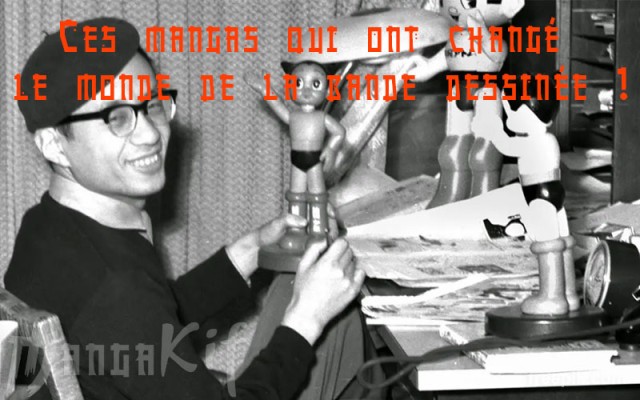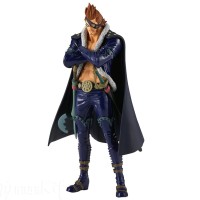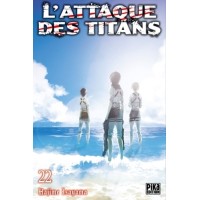These Mangas Have Truly Changed the World of Comics!
These Japanese comics have not only captivated the hearts of millions of fans globally but have also revolutionized the comic art landscape. From their unique artistic style to epic storylines and thought-provoking themes, manga provides an unparalleled reading experience. This article delves into the cultural and creative impact of mangas that have reshaped our understanding of what comics can be. Whether you're a long-time fan of "Dragon Ball" or a curious newcomer eager to grasp the allure of "One Piece", this comprehensive guide offers a panoramic view of the masterpieces that have redefined the genre.

Introduction
Each page and every illustration reflect a blend of art, culture, and imagination that transcends boundaries. Far more than just comics, mangas have established themselves as a cultural force, influencing not only the entertainment industry but also art and literature on a global scale. These works, originating from Japan, have not only captured the imaginations of millions of people worldwide, but they've also changed how we consume and appreciate comic art.
In this article, we will attempt to shed light on the transformative impact of some iconic mangas on the world of comic art. We will explore how flagship titles like "Naruto", "Akira", and "Death Note" have shattered genre conventions, introduced daring themes and complex narratives, and consequently redefined what a successful comic means on a global scale. These are the works that have changed the game, elevating manga from a cultural niche to a global phenomenon that truly deserves in-depth attention and analysis.
1. The History of Manga
To fully grasp how mangas have revolutionized the world of comic art, it's crucial to trace back to their roots.
1.1. Brief History of Manga in Japan
Manga is far more than a passing fad. It has deep roots in Japanese culture that date back centuries. Although the contemporary form of manga is relatively recent, its precursors can be traced to traditional artistic works and illustrated scroll paintings. Over time, what started as sketches and caricatures in the margins of manuscripts evolved into a sophisticated narrative art form, adopting diverse genres and unique visual styles. Modern manga solidified as a medium post-World War II, influenced by Western comics while retaining distinct Japanese cultural and stylistic elements.
1.2. How Did Manga Expand Beyond Japan?
The rise of manga on a global scale is a fascinating tale of cultural diffusion and adaptation. In the 1980s and 1990s, with the boom of Japanese pop culture, manga began to be translated and adapted for international audiences. Iconic series like "Dragon Ball", "Pokémon", and "Sailor Moon" were among the first to capture the imagination of fans outside of Japan. Thanks to the advent of the internet, online forums, and streaming platforms, manga has found a global audience that transcends cultural and linguistic boundaries. Today, it's hard to ignore the global impact of manga, which influences not only other forms of comic art but also popular culture at large.
2. Unique Elements of Manga
Before delving into the pioneering mangas, let's take a moment to consider what truly sets manga apart from other forms of comic art and makes it unique.
Manga is more than just a Japanese variant of comic art. It's an artistic and narrative medium that has significantly distinguished itself from its Western counterparts. To understand manga's transformative impact on the world of comic art, one must first grasp what makes it unique. This section explores the specific elements that differentiate manga from other forms of comic art: artistic style, narrative, and themes.
One of the first things one notices when opening a manga is its distinctive artistic style. Characters with exaggeratedly large eyes, dramatic facial expressions, and meticulous attention to visual details are elements that define the manga style. This unique visual style allows for greater expressiveness and adds depth to the characters and the story.
Manga is also remarkable for its unique narrative approach. Unlike Western comics, which often focus on action and dialogue, manga takes the time to develop complex backstories and focus on the emotional states of the characters. This creates a more immersive reading experience, allowing readers to engage more deeply with the material.
Lastly, manga is known for tackling a wide range of themes, often bolder and more complex than those traditionally explored in Western comics. From profound social issues to philosophical questions, to ethical dilemmas, manga does not shy away from subjects that challenge and engage the reader's mind.
3. Pioneering Mangas
In this section, we will primarily focus on three mangas that have been true pioneers, transforming not only the industry in Japan but also shaping global perceptions of the medium.
3.2. Astro Boy (Tetsuwan Atom) by Osamu Tezuka
Known in Japan as "Tetsuwan Atom", this seminal work by Osamu Tezuka is often considered the starting point of modern manga. Tezuka, sometimes referred to as the "God of Manga", used "Astro Boy" to introduce elements of science fiction and humanity into the genre, laying the foundation upon which countless other manga creators would build.
3.3. Akira by Katsuhiro Otomo
Another game-changing work is "Akira" by Katsuhiro Otomo. This dystopian manga not only redefined the science-fiction genre within manga but also had a massive impact on global pop culture. Its film adaptation introduced many new fans to the world of manga and anime, and the book itself serves as a fascinating study on power, corruption, and humanity.
3.4. Nausicaä of the Valley of the Wind by Hayao Miyazaki
Before becoming an animation giant with films like "My Neighbor Totoro" and "Spirited Away", Hayao Miyazaki captivated readers with his manga "Nausicaä of the Valley of the Wind." This epic tale of a young girl striving to save her world from environmental disaster raises profound questions about ecology and human interaction with nature.
4. Internationally Successful Mangas
Having examined the pioneers of manga, it's time to delve into works that have transcended cultural and geographical boundaries to become global phenomena. In this section, let's explore three internationally successful mangas such as "Dragon Ball", "One Piece", and "Naruto", and how these works have left an indelible mark on the global comics landscape.
4.1. Dragon Ball by Akira Toriyama
"Dragon Ball", created by Akira Toriyama, is undoubtedly one of the most iconic mangas ever made. This epic saga has captivated generations of readers and viewers, extending far beyond its country of origin to become an integral part of global pop culture. Its influence can be seen not only in other mangas but also in movies, video games, and even sports.
4.2. One Piece by Eiichiro Oda
When talking about international success, it's impossible not to mention "One Piece" by Eiichiro Oda. Holding global records for the most copies published for a comic book series by a single author, "One Piece" is more than just a manga—it's an institution. The work has captured the imagination of fans worldwide with its unforgettable characters and universal themes of friendship, adventure, and freedom.
4.3. Naruto by Masashi Kishimoto
Last but not least, "Naruto" by Masashi Kishimoto is another brilliant example of how a manga can capture the global imagination. The series, which follows the adventures of a young ninja named Naruto Uzumaki, has been lauded for its deep character development, intricate storytelling, and themes of camaraderie and perseverance.
5. Influence on Western Market and Creators
As you may already know, the impact of manga is not confined to its country of origin or its expansive international audience. They have also had a significant influence on creators and the comic book market in the West.
Indeed, manga has significantly impacted how stories are told in comics and animated series abroad. Western creators are often inspired by the narrative depth, complex characters, and social themes present in manga. This influence can be observed in works that borrow visual style, layout, or even narrative elements from manga.
Series like "Avatar: The Last Airbender" and "Teen Titans" clearly show the influence of manga in their artistic style and storytelling. Others, such as "Scott Pilgrim vs. The World", incorporate elements of manga into a more traditionally Western comic book format. These works serve as living proof that manga's influence extends far beyond the borders of Japan, enriching the diversity and depth of narrative media on a global scale.
6. Cultural and Social Impact
Manga's influence is not limited to the realm of entertainment; they also play a significant role in shaping social and cultural discussions on a global scale. While mangas are often viewed as simple forms of entertainment, they can also have a profound cultural and social impact.
Works like "Barefoot Gen", which addresses the horrors of war and nuclear weapons, or "March Comes in Like a Lion", which explores mental health and social relationships, offer more than just stories. They open necessary dialogues on issues affecting broader society. These mangas tackle delicate themes with nuance and sensitivity, making these subjects more accessible to a global audience.
These works do not merely present issues; they actively contribute to broader discussions. For instance, "Barefoot Gen" has been used as educational material to teach about the devastating effects of war. Likewise, "March Comes in Like a Lion" has sparked conversations about the stigma related to mental health. By engaging readers in complex subjects, these mangas facilitate global dialogue and encourage meaningful social change.
7. Manga in the Digital Age
The digital age has further broadened manga's reach, redefining how these works are distributed and consumed.
Indeed, the advent of digital platforms has completely revolutionized the way manga is distributed and consumed. Gone are the days when one had to wait for physical publication to dive into the latest chapter of a favorite series. Now, digital versions allow for instant access, expanding the fan base and exponentially increasing manga's popularity.
Furthermore, digitization has not only changed how manga is consumed but has also widened its scope. The ease of online access has enabled fans around the world to discover and embrace manga like never before. This global reach, in turn, has strengthened manga's influence on international pop culture and comics, solidifying its position as a worldwide cultural phenomenon.
Conclusion
In conclusion, it is undeniable that manga has left an indelible imprint on the world of comics and beyond.
Whether through their unique elements of artistic style and storytelling, or through pioneering series like "Astro Boy" and "Akira", mangas have not only innovated the comic book genre but have also inspired creators worldwide. Their influence extends far beyond panels and speech bubbles; they have initiated important conversations on social and cultural issues while capturing the imaginations of multiple generations.

 Francais
Francais 




